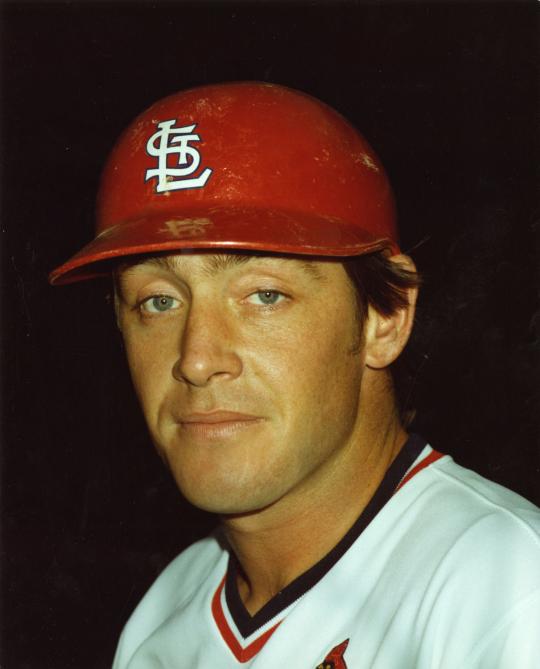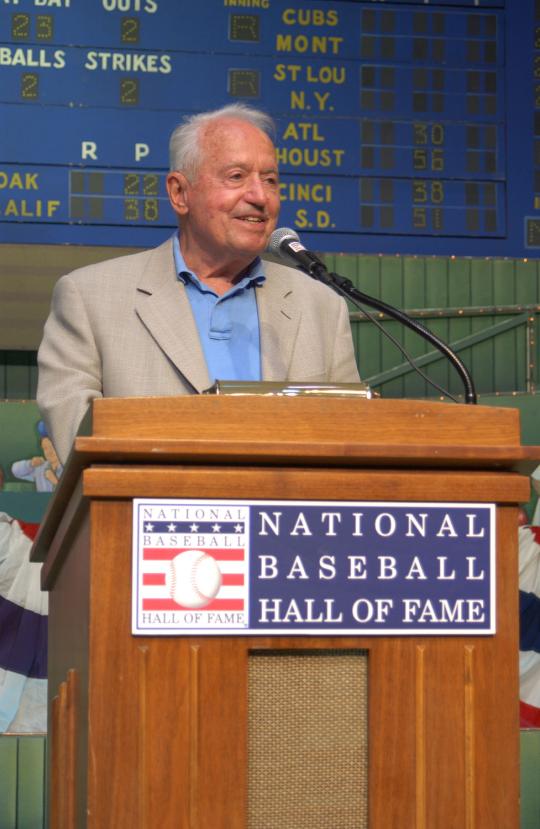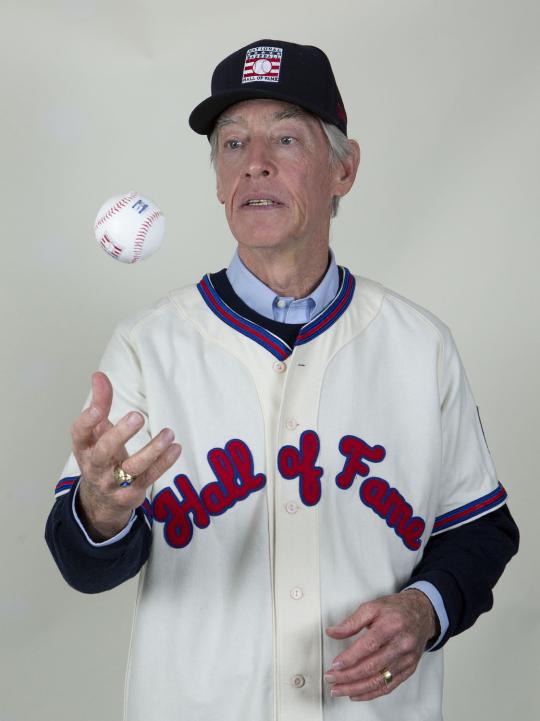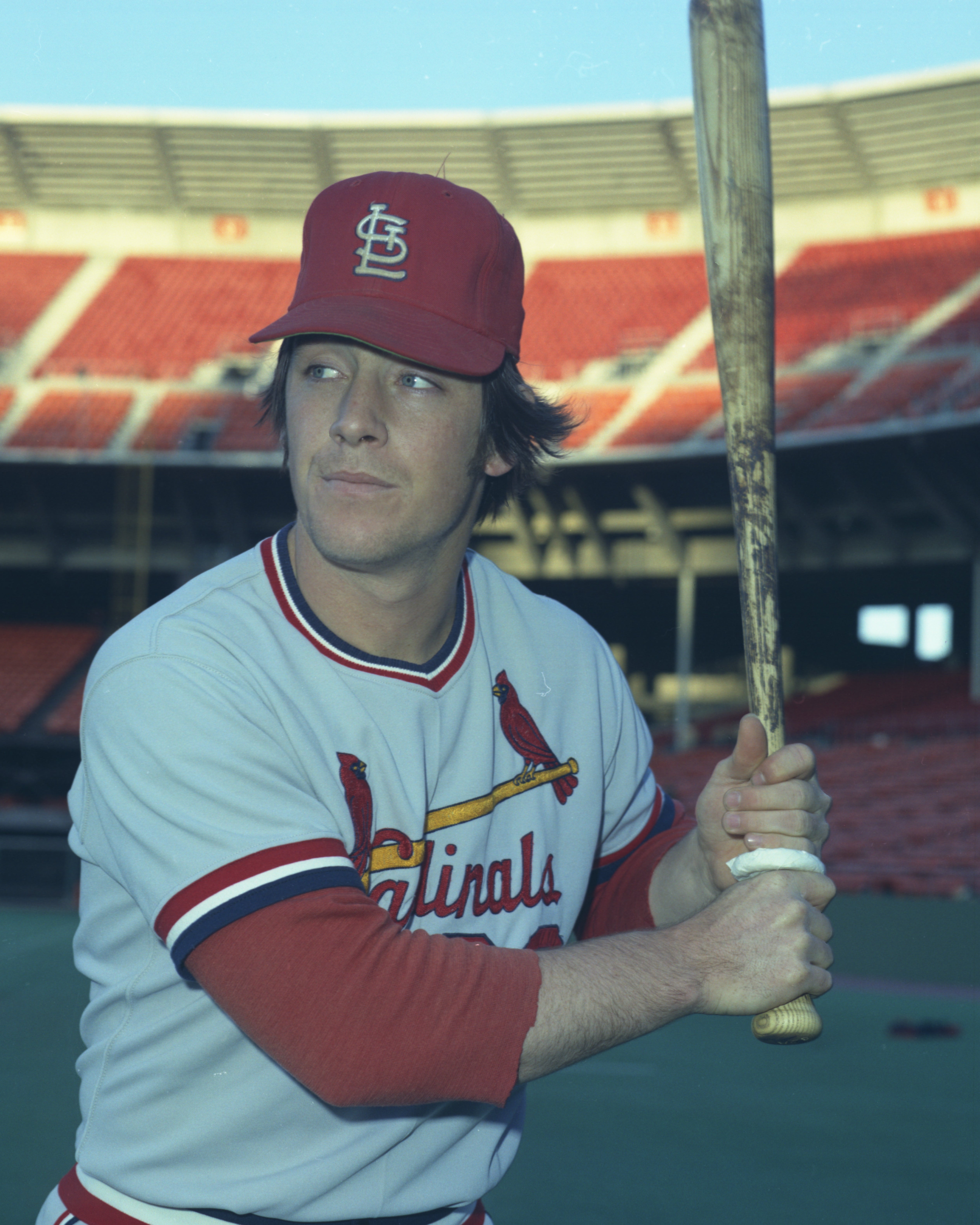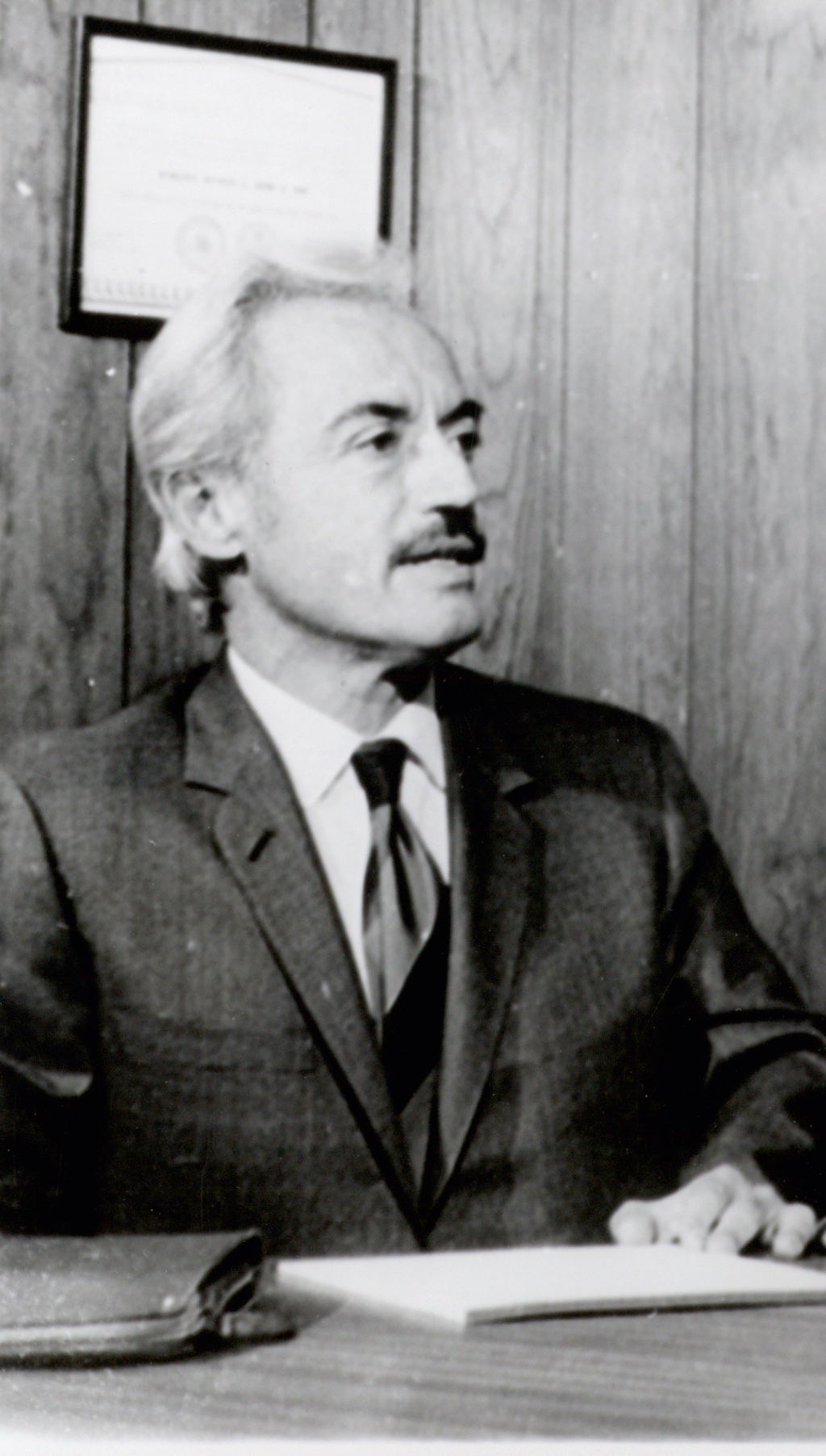- Home
- Our Stories
- Simmons reflective, thankful in first full day as Hall of Famer
Simmons reflective, thankful in first full day as Hall of Famer
For new Hall of Famer Ted Simmons, the last 24 hours have been a whirlwind of emotions, congratulations and travel logistics.
Only one day after receiving the career-affirming phone call that placed him among the greats of the game, the longtime catcher was able to share his thoughts on what this life-changing moment means to him.
Simmons, along with acclaimed labor leader Marvin Miller, became the first two members of the National Baseball Hall of Fame Class of 2020 on Dec. 8. Miller passed away at the age of 95 on Nov. 27, 2012 in Manhattan, New York. The election of Simmons and Miller brings the total to 331 elected members of the Cooperstown shrine.
Hall of Fame Membership
There is no simpler, and more essential, way to demonstrate your support than to sign on as a Museum Member.
The two electees were among the nine former big league players and one executive that comprised the 10-name Modern Baseball Era ballot that was voted upon at the Baseball Winter Meetings in San Diego. The Modern Baseball Era (1970-87) is one of four Eras Committees which provide an avenue for Hall of Fame consideration to managers, umpires and executives, as well as players retired for more than 15 seasons.
Simmons, who was named on 13 of 16 ballots, surpassing the 75 percent threshold, and Miller, who was named on 12 of 16 ballots (75 percent), will be joined in the Hall of Fame Class of 2020 by any electees who emerge from the Baseball Writers’ Association of America voting, which will be announced on Tuesday, Jan. 21.
At a Monday, Dec. 9, press conference at the Manchester Grand Hyatt in San Diego, with a banquet room full of media in town for the Winter Meetings, the dais in front included Hall of Fame Chairman Jane Forbes Clark, Hall of Fame President Tim Mead and Simmons.
Early in the press conference, Simmons was presented with the uniform of his new team, which included a dark blue cap sporting the Hall of Fame logo as well as a white jersey with “Hall of Fame” emblazoned across the front in red script.
“We welcome you to Cooperstown, we welcome you to your new team, and we ask you to put on the jersey of your new team,” Clark said to Simmons.
“How’s it look?” Simmons whispered to Clark.
“It looks pretty good,” she replied with a smile.
Simmons played on three big league teams, but his fourth is star-studded.
Clark also had high praise for the other recently elected Hall of Famer, adding: “Marvin Miller served as executive director of the Major League Baseball Players Association for 17 years beginning in 1966. More than 50 years later, his work has now impacted more than half of all those players ever to wear a major league uniform. He ushered in a new era of players’ rights and his legacy is strong today seven years after his passing. And we are so happy that Marvin is joining us in Cooperstown as part of the Class of 2020.”
Miller was also in the thoughts of Simmons on this day of celebration.
“I can’t begin to tell you, anybody in this room, the impact that Marvin Miller has had on me and my family,” Simmons said. “I’ll put it to you like this: The first contract I played for at the major league level was for $7,500 and Marvin that summer raised it to $10,000. And then the following spring training the minimum salary went from $10,000 to $14,000. I turned to my wife and said, ‘I think we can buy a car.’ Then you could buy one for $800 brand new.
“Marvin impacted everybody that played and were members of the Players Association in ways that I’ll never forget. And my family will never forget. He changed everything. Marvin had that kind of impact and is still having that impact. I couldn’t have handpicked anybody I’d rather go in with.”
Simmons, 70, began his major league career in 1968 and went on to play 21 seasons, including 13 behind the plate with the St. Louis Cardinals, five with the Milwaukee Brewers and his final three as a member of the Atlanta Braves.
The owner of a career .285 batting average, the switch-hitter also totaled 248 home runs, 1,389 RBI, and 2,456 big league games.
“I’d like to thank the Modern Era Committee that brought me here today. I just decided they’ve all become my very best and favorite friends,” Simmons joked at the start. “Of course, it means everything to me. I’ll not forget them for making this all happen.”
Simmons, surprisingly, lasted only one year on the Baseball Writers’ Association of America ballot, receiving 3.7 percent in 1994.
“It was obviously very, very exciting to get that telephone call. Twenty-five years is a long time. I was one-and-done, so to speak, a long time ago. At that time I pretty much thought my candidacy was over,” Simmons said. “Then things changed and evolved and were brought back to life, so to speak. And then yesterday, finally, made that final leap. I can only tell you how exciting that has made me feel. Everything that has gone in the past is all part of it. It’s all a good part of it. It was supposed to happen just like this. And it happened just like this. And I couldn’t be happier and I wouldn’t change anything. Not one thing.”
Simmons on receiving the all-important phone call at 6:30 p.m. CT in St. Louis, and waiting it out with his wife.
“I can only explain to you that the anxiety begins about a month ago and then just starts building,” said. “Before long it has preoccupied every thought you’ve got. And then finally it all just kind of releases itself when the phone call finally comes.”
Simmons, an eight-time All-Star, never struck out more than 57 times in one season and finished 10 seasons with more walks than strikeouts. Among major leagues who played at least 50 percent of their games as a catcher, he ranks second all-time in hits, doubles and RBI. He collected at least 90 RBI eight times, drove in at least 100 three times, and batted at least .300 on seven different occasions.
“It was really the sabermetrics people who really revived my candidacy,” Simmons recalled. “When I was essentially one-and-done, for the lack of a better phrase, people started examining that. They started looking at the numbers and making the comparisons. And then the discussions started. Pretty soon people were walking up to me and saying things like, ‘Did you know … ?’
“Pretty soon people were coming up a lot and they were talking to each other. And then they started talking to everybody. It just grew. The sabermetric people brought me back to life.”
Asked about his patience during the long process, Simmons explained to the crowd that it’s what makes the Hall of Fame so unique and special.
“It may sound so trite because it’s used so often, but it’s a hard place to get into. And it should be,” he said. “There’s no reason for me to feel in any way, shape or form that my journey to this place is any more or any less than anybody else’s. It is hard. It’s an excruciating wait. And until it happens for you, you just can’t describe what it’s like.”
Bill Francis is the senior research and writing specialist at the National Baseball Hall of Fame and Museum

